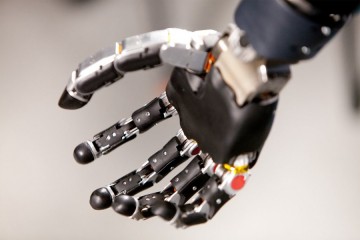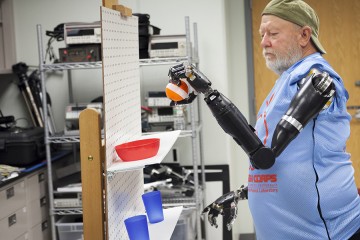An Ohio woman, her surgeon, and a team of engineers from the Johns Hopkins Applied Physics Laboratory are teaming up to use an APL-developed robotic arm to push the boundaries of prosthetic appendages.
The arm is a Modular Prosthetic Limb, and when the device is paired with an innovative new surgical technique called targeted sensory reinnervation—wherein nerve endings are relocated to other parts of the body—patients are able to not only send signals to their prosthetics, but for the first time, they are able to receive signals as well.
Melissa Loomis lost her lower arm when a raccoon bite became infected. Her surgeon, Ajay Seth, used targeted sensory reinnervation to transfer her hand's nerves associated with touch to her upper arm. Now, while wearing a sensory sleeve over her new nerve endings, she is able to receive signals from her prosthetic, including the sense of pressure needed to grasp a ball.
"These are really fine movements. To be able to pick up those individual movements is pretty amazing," says Bobby Armiger, an engineer with the Applied Physics Laboratory who worked with Loomis and Seth to test the arm.
"Nobody has ever done this," Seth says. "We nailed it."
Posted in Science+Technology










